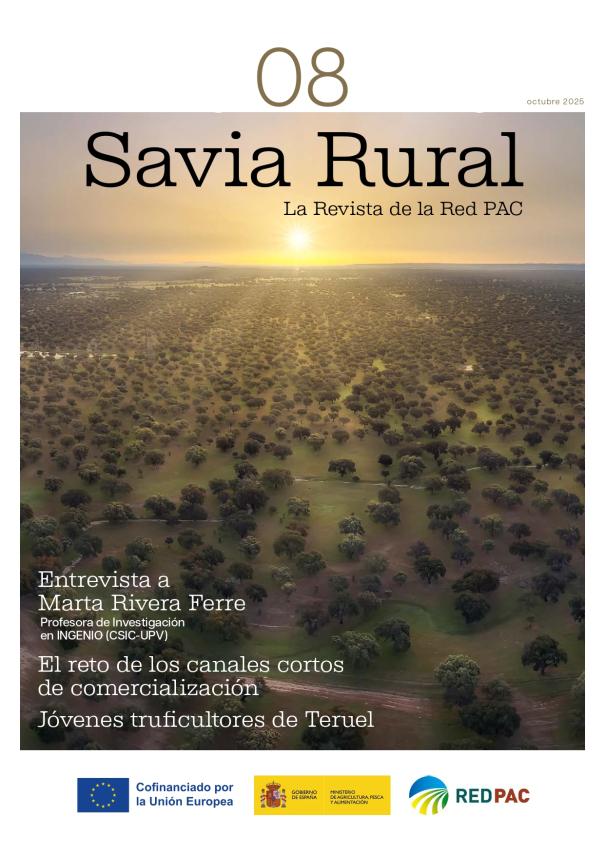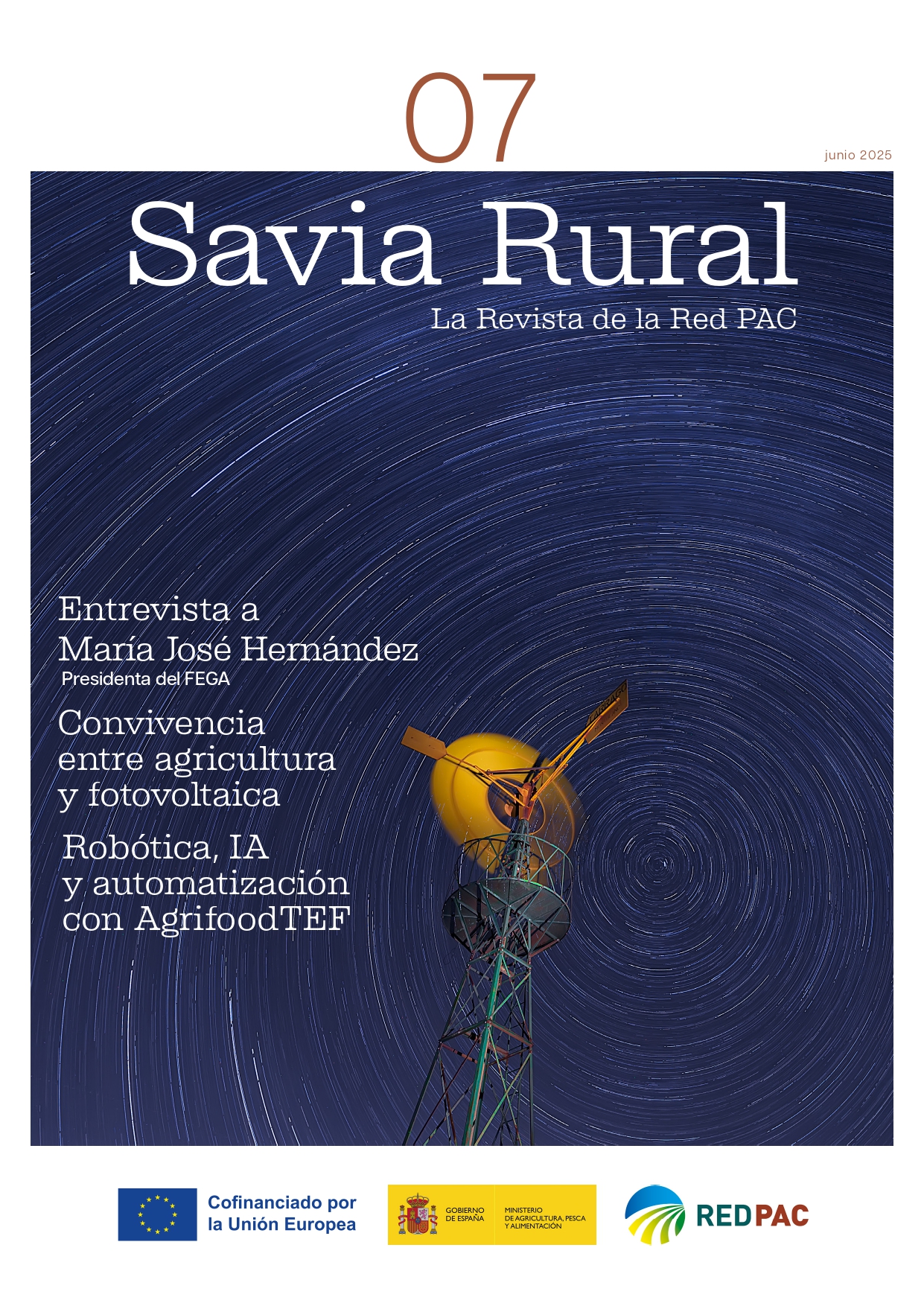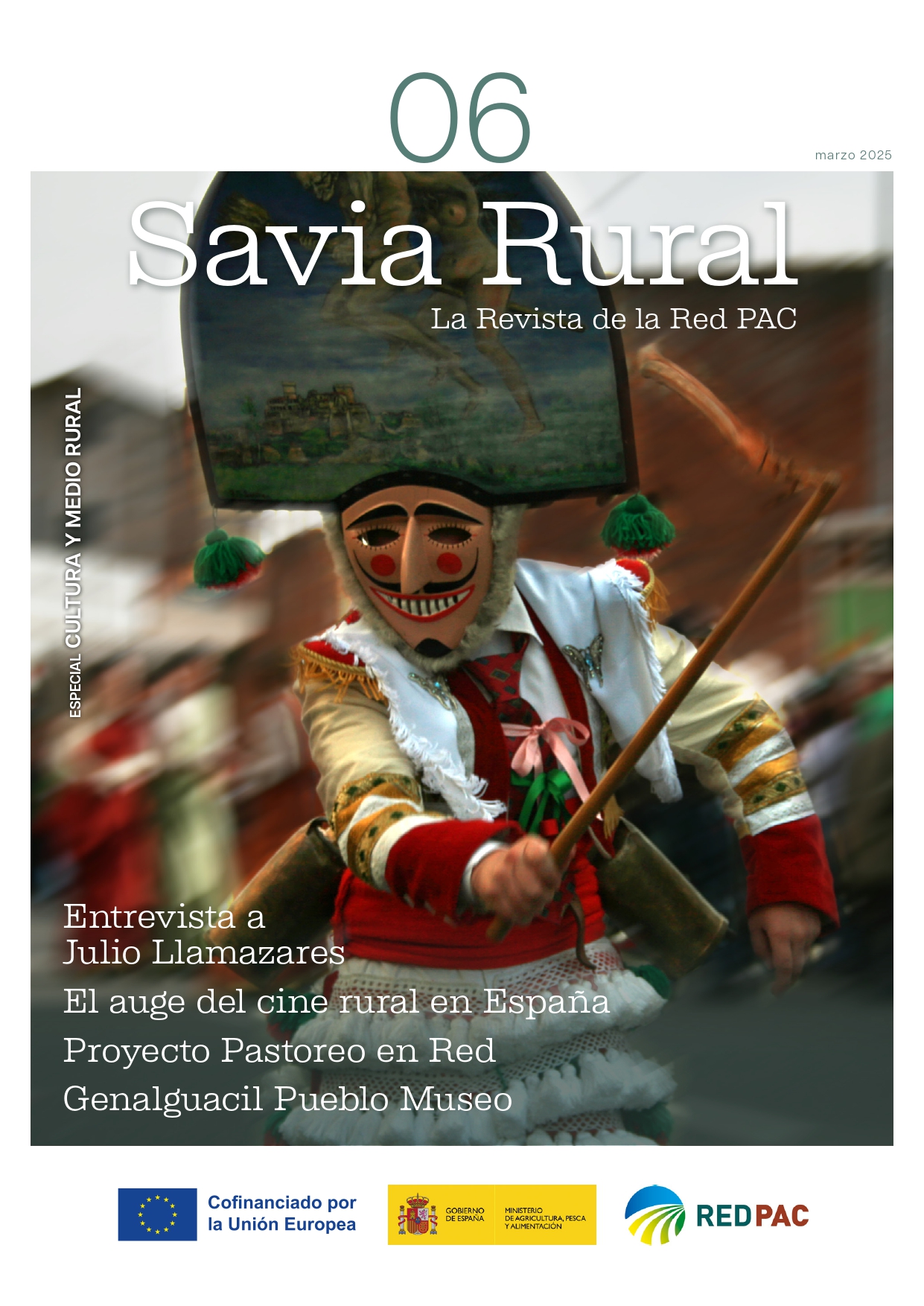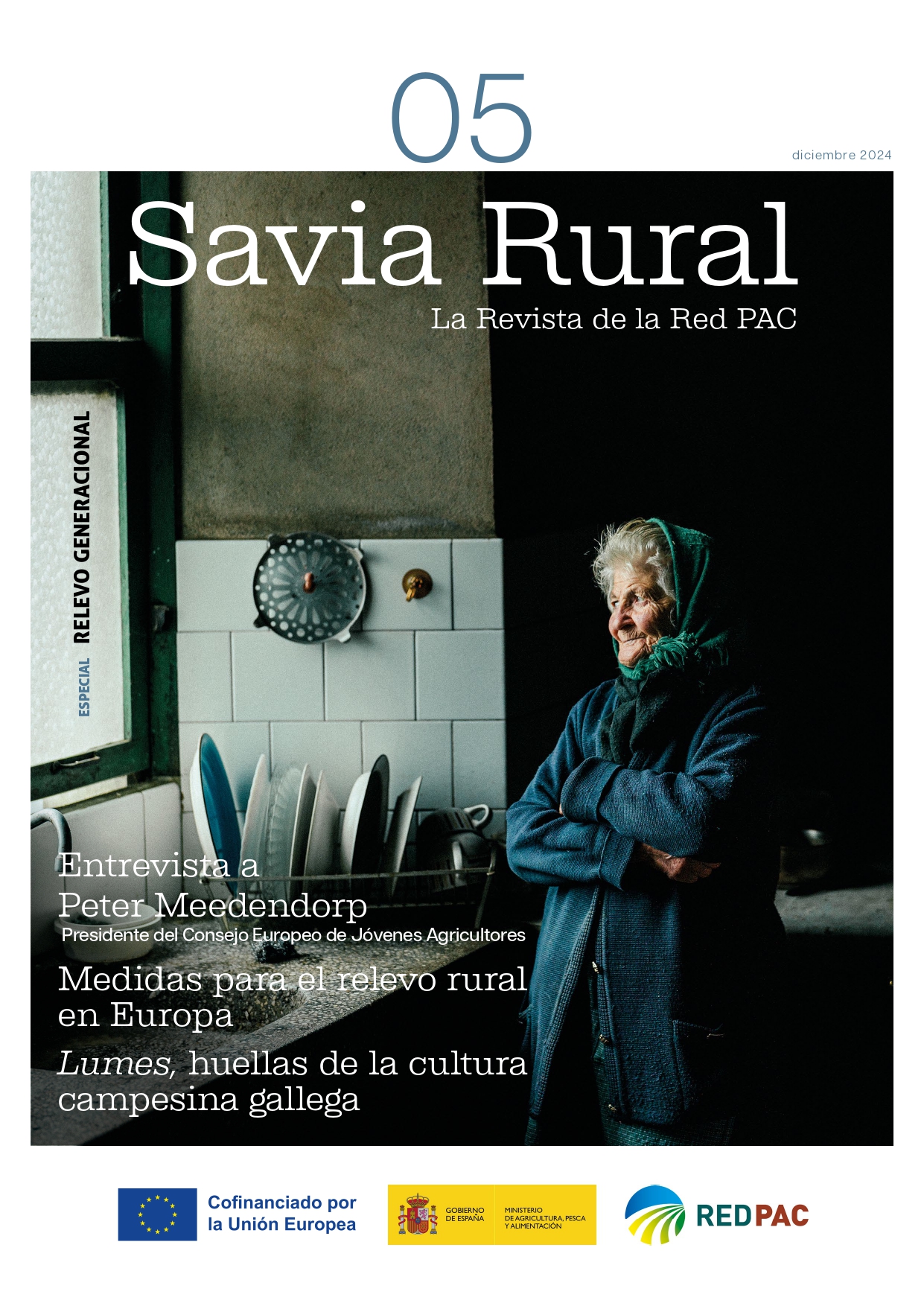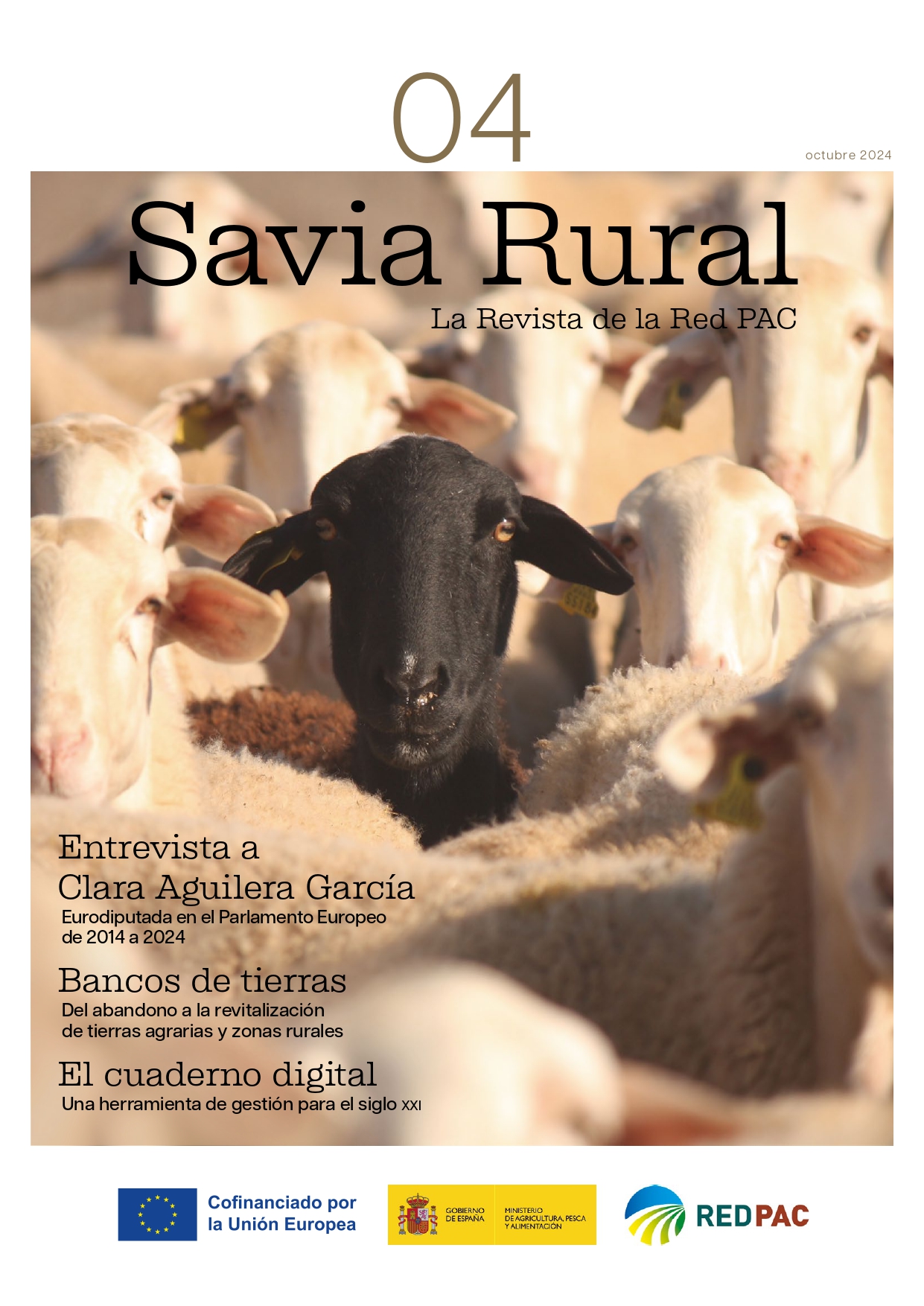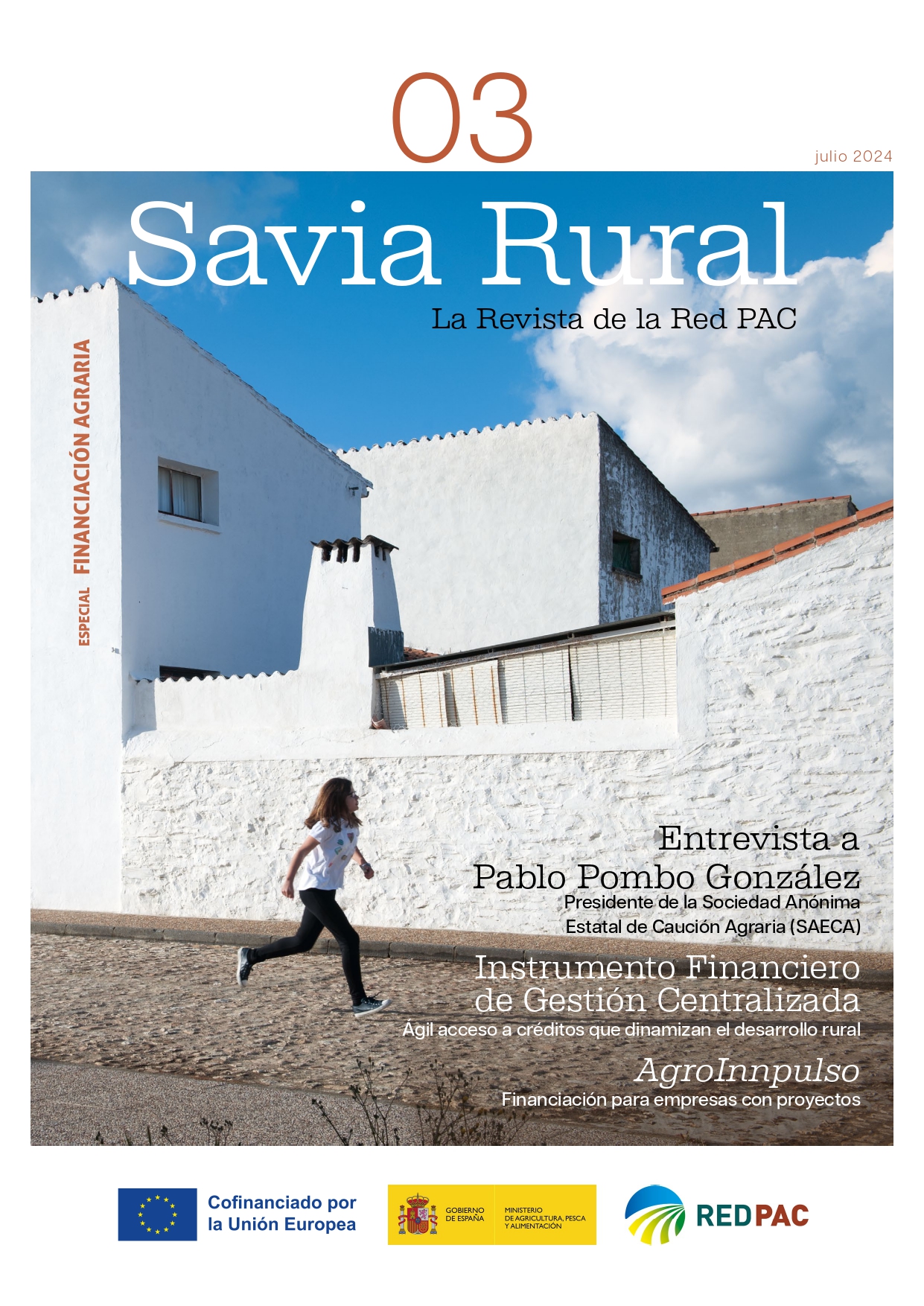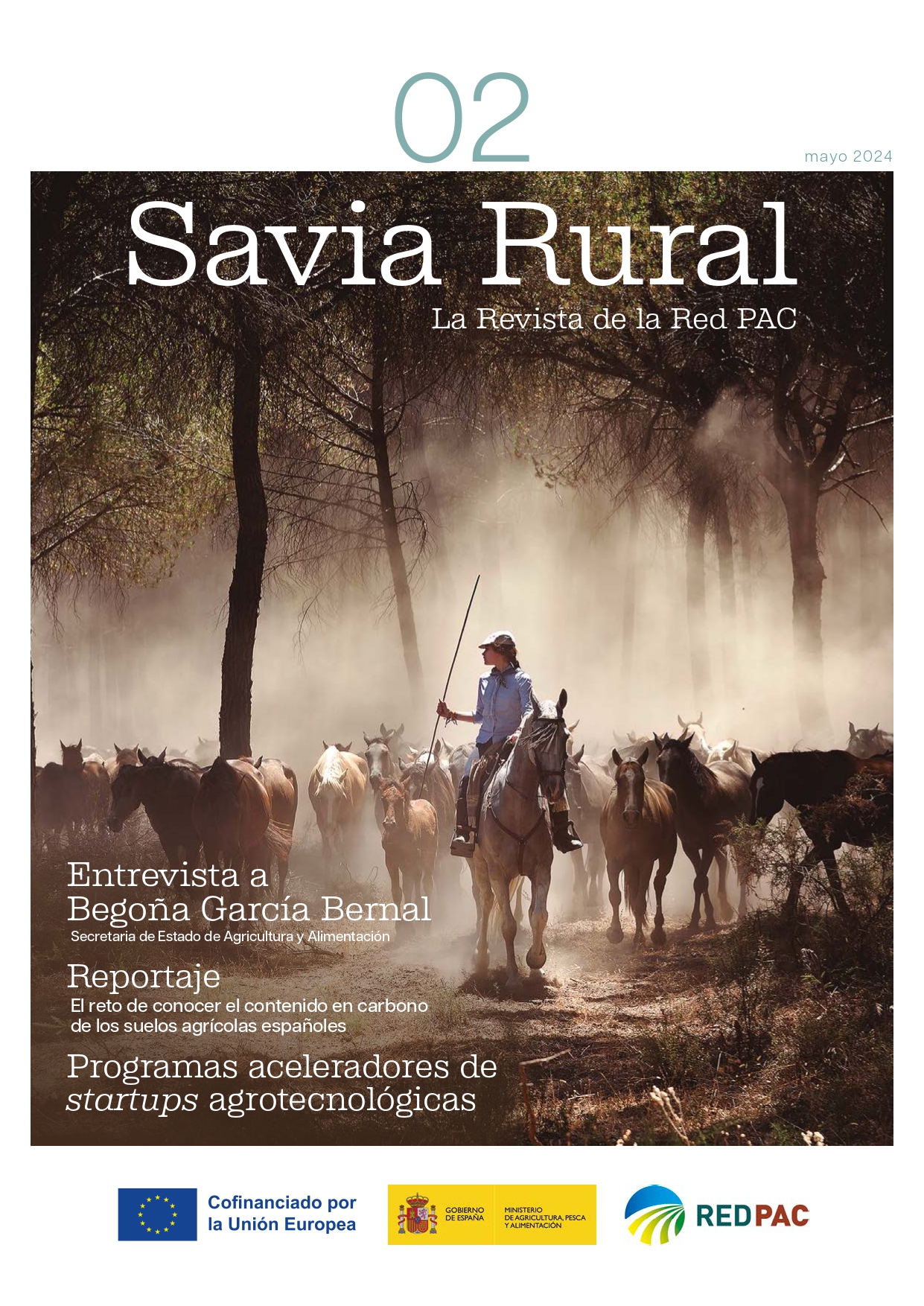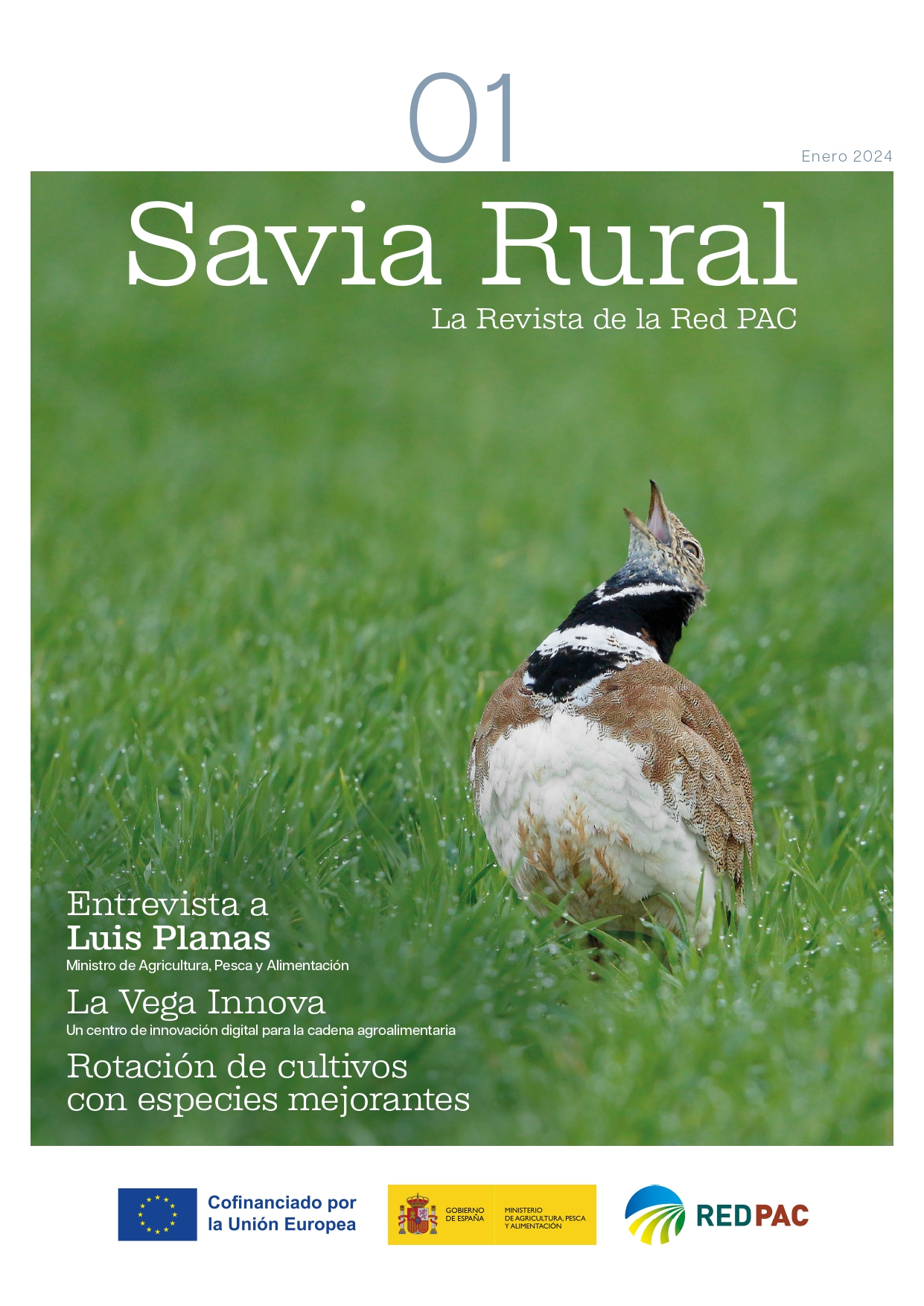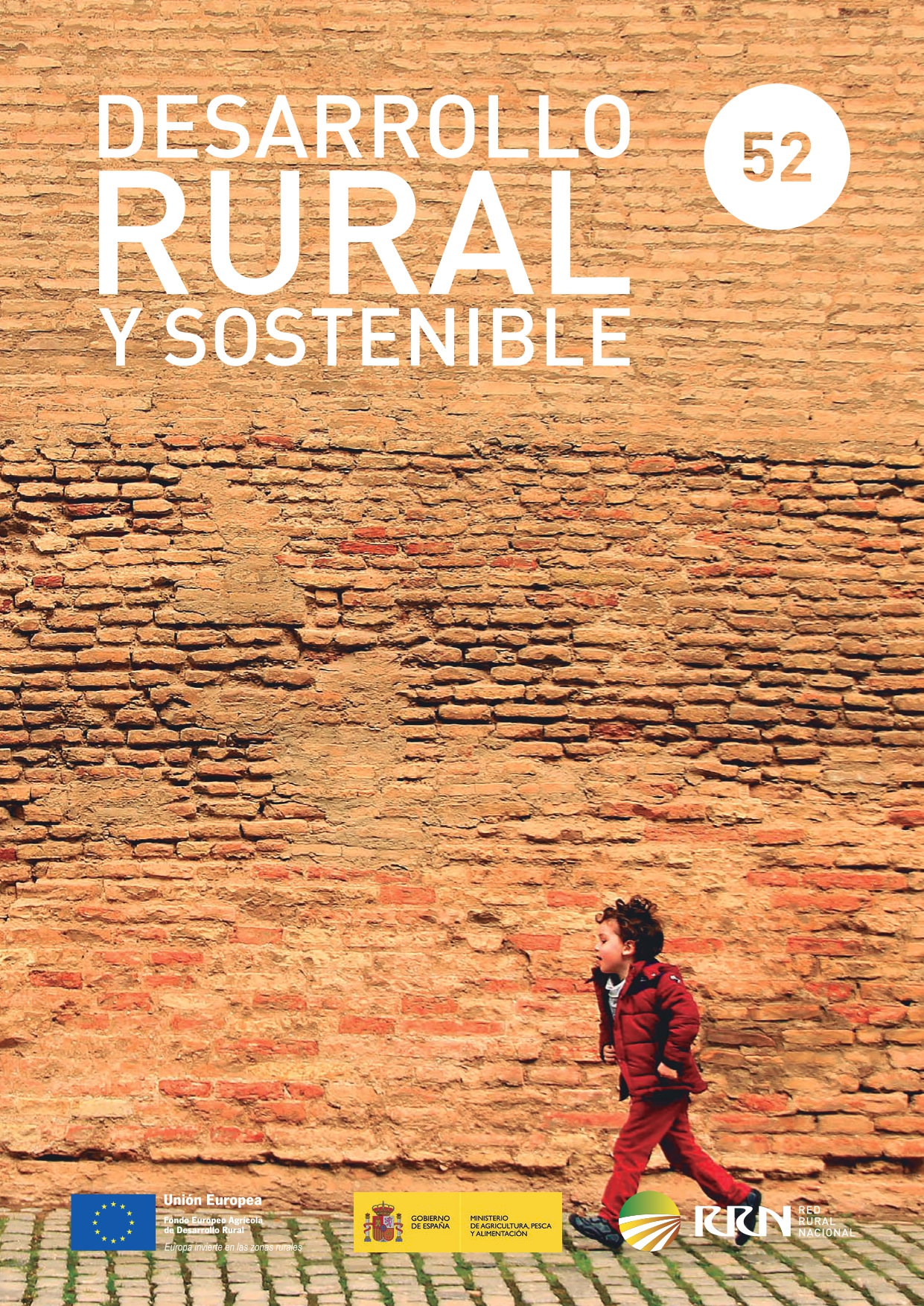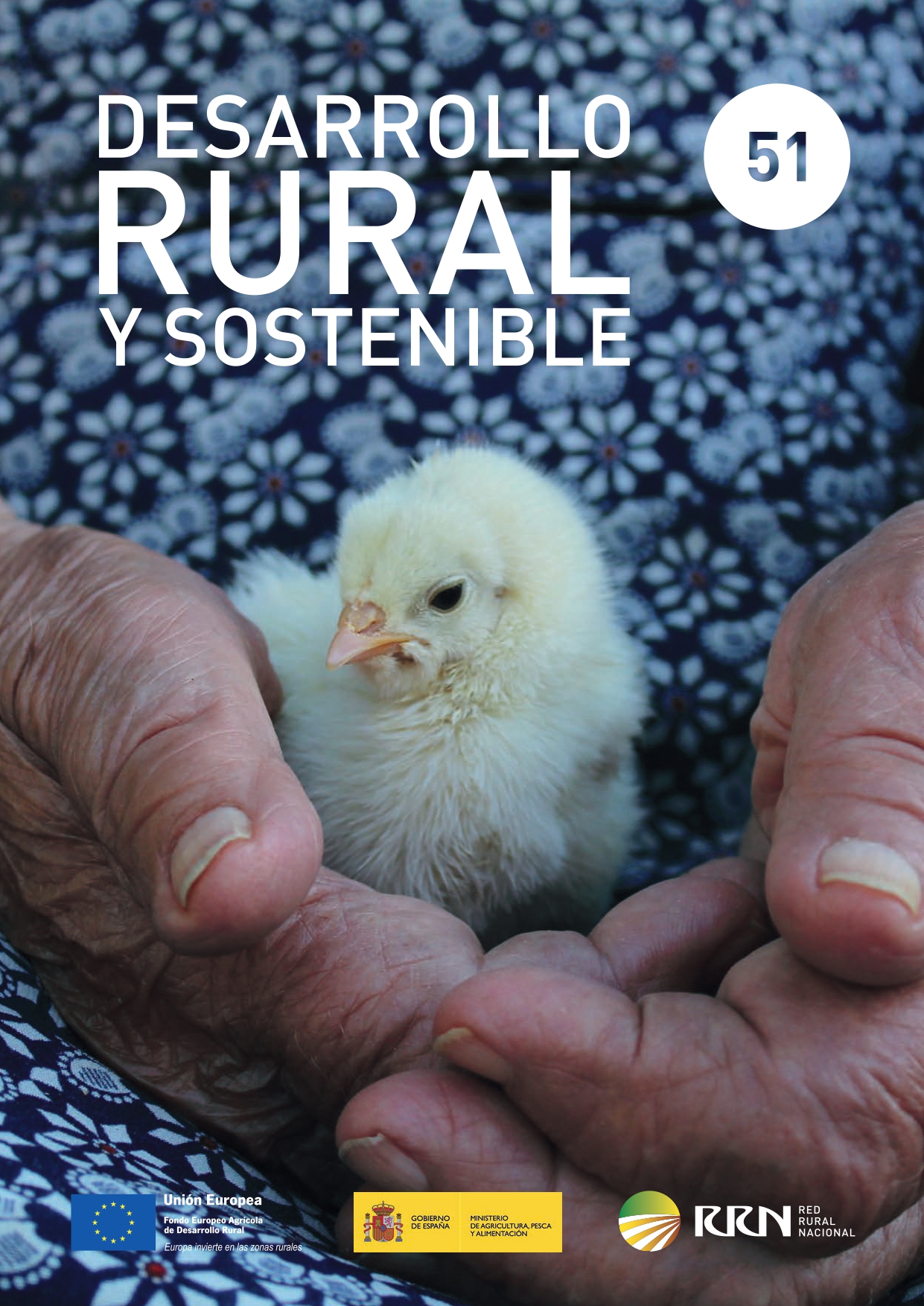- 15 de October de 2025
This autumn issue of Savia Rural addresses new topics related to agricultural resilience and rural revitalization in different areas. At the macro level, we had an interesting interview with researcher Marta G. Rivera Ferre on agroecology and sustainability in our food systems. And, on a smaller scale, we feature several inspiring local experiences: such as the Madrid Rural project on short supply chains; or the Murcian farm of La Junquera and its training approach in regenerative agriculture. We discuss the "Sow, Grow, and Harvest Your Future" strategy, with which the Ministry of Agriculture aims to promote the professionalization or incorporation of young people into the agricultural sector. We showcase the innovation of operational groups for leveraging resources in fertilization. And, among other content, we write about new examples of succession, with the young truffle farmers of Teruel, and we echo the proposed Multiannual Financial Framework for the EU 2028-2034.
- 18 de June de 2025
Issue 7 of Savia Rural contains several initiatives that strengthen or open up possibilities for rural development. We spoke with María José Hernández, president of FEGA, an organization that has been providing security for the financial management of CAP aid for 30 years. We discussed rural proofing , the approach that incorporates a rural vision into laws, and the possibilities offered by combining photovoltaics and crops to maintain agricultural land use. We showed how Agrifood TEF is helping to bring the most advanced agricultural innovation to the market. We also highlighted the effective collective action of initiatives such as Bioterreta, which revitalizes agricultural land in La Vall d'Albaida, Valencia; or Cal Rural, which rehabilitates housing in rural Catalonia. We also discussed culture, with the unique Larrés drawing museum in Huesca, and generational renewal, with two young Pastoras Nómadas and the Enrear Para Actuar association.
- 18 de March de 2025
This issue of Savia Rural features culture among its main components. We speak with writer Julio Llamazares, who has made memory and the rural landscape two constants in his literature. We delve into the boom in rural areas in Spanish cinema. We discuss two experiences surrounding contemporary art: the Genalguacil Museum Village and the artist residencies of the Sambrona Association of Alburquerque. We showcase the work of Wooldreamers, which is revaluing wool in Mota del Cuervo; and that of illustrator and editor Leticia Ruiz Fernández in Garganta la Olla, Cáceres. And we continue talking about generational change, with the Agrarian Test Spaces; and agricultural innovation, with the reduction of GHG emissions on pig farms in Murcia, the Networked Pastoralism program, which maintains forest areas under the electricity grid, and the first wave of startups from La Vega Innova.
- 18 de December de 2024
Generational change is the central theme of this issue of Savia Rural . Access to land, financing, and training are the pillars of several initiatives described in their articles, including some European entities. We interview Dutch farmer Peter Meedendorp, president of the European Council of Young Farmers; we showcase the training work of the Cooprado Foundation in its Agrarian Test Space and its shepherd school; and we address the work of Relleu Agrari in Catalonia, enabling young farmers to continue the work of those who have left their lands. We discuss Terractiva's facilitating work for new entrants to Galician agriculture, many of whom have no family history in the sector; a circumstance shared by the multi-award-winning livestock farmers of OmañaCea, in León. And we showcase traces of the Galician peasantry without a replacement in Lumes , a photography project by Adra Pallón.
- 14 de October de 2024
The first report in this issue of Savia Rural addresses a tool that is proving its usefulness in facilitating access to agricultural activity: land banks. We also discuss the digital land registry and how it can help improve farm management. We speak with Clara Aguilera about agricultural policies in the European institutions, to which she has dedicated the last ten years of her political career. We showcase inspiring projects in rural areas, from the primary to the tertiary sectors: the Son Jover farm, the Delicatexe chicken broth company, and the What is Music festival in Frías (Burgos). We also feature other content with a strong communicative component, such as reflections by teachers Belén Galletero and Vanesa Saiz on how to communicate about depopulation, or the Rural Mentors project: an initiative that has allowed several entrepreneurs to improve their businesses thanks to the expert advice of other women.
- 16 de July de 2024
Financing, a key element for starting or improving rural farms and businesses, is the central theme of this issue of Savia Rural. We discuss entities and initiatives to make it more accessible, in collaboration with the Ministry of Agriculture: such as the Spanish Agricultural Guarantee Society (SAECA), whose function is explained by its president, Pablo Pombo, in the opening interview; or the Centrally Managed Financial Instrument, which is facilitating access to credit in several autonomous communities; or AgroInnpulso , a line of financing from the National Innovation Company (ENISA) for agri-food companies. We also discuss the important role of LEADER financing in a veterinary clinic in Tierra de Campos and in three asset recovery projects in La Rioja; and the role of agricultural insurance in a fruit farm in Lleida. And we showcase, among other content, the dynamic work of entities such as COCEDER and the young Andalusian association Rurales en Red.
- 08 de May de 2024
Several topics with a strong innovative component and notable female leadership are featured in the second issue of Savia Rural . We speak with the new Secretary of State for Agriculture and Food, Begoña García Bernal. We discuss the Ministry of Agriculture's plan to assess the organic carbon content of 16,000 agricultural plots across Spain and describe how accelerator programs for agri-food startups work. We showcase inspiring initiatives in the agricultural and rural sectors, such as Pilar Fumanal's L'Albeitar pig farm; Anna Nebot's sustainable fish farming at Aiguanatura dels Ports; the Canned Lessons program by two young women from Blancas (Teruel); and the professional projects associated with the Asturias Rural Ticket. We also feature Professor Eduardo Moyano's opinion on the associative structure of farmers; and we report, among other content, on the new AKIS Advisors Platform.
- 30 de January de 2024
This is the first issue of Savia Rural, the CAP Network Magazine , in which we will address current issues related to agricultural profitability and rural development—the two pillars of the CAP—with innovation as its fundamental axis. On this occasion, we speak with Minister Luis Planas about the prospects for the new CAP and the recent Spanish Presidency of the EU Council; we provide the opinion of European trade union leader Christiane Lambert; and we discuss, among many other topics, soil improvements associated with crop rotation with improving crops, conservation agriculture, a project by local action groups and the Navarrese government to improve energy sustainability, the work of the master brewers of Bailandera in Bustarviejo, and the technological improvement opportunities offered to farms and processing industries by the digital innovation center La Vega Innova .
- 03 de November de 2022
In this year's final issue, we discussed rural revitalization policies with Francesc Boya, Secretary General for the Demographic Challenge; the European conference to promote the Rural Pact, as part of the EU's Long-Term Vision for Rural Areas; and energy sustainability with the Spanish Biomass Association. We feature Javier Sierra Andrés, Spain's Minister of Agriculture at the UN, on the impact of the difficult global trade situation on the agricultural sector. We also discuss multiple examples of innovation, such as carbon farming, the use of big data in forest mushroom and cork extraction, the production of spirulina algae by an entrepreneur in Badajoz, and the social and cultural initiatives of the Unfinished Museum of Urban Art in Fanzara, Castellón.
- 07 de June de 2022
In this new issue, we discuss rural resilience with examples of energy sovereignty; and also food sovereignty, with the measures being developed to mitigate the effects of the current war in Ukraine on the primary sector. We discuss with José Bayón, CEO of the National Innovation Company, the financing possibilities his organization offers to rural businesses. We introduce the more social component of sustainability by discussing innovative projects in this field, such as SIMRA, and social economy enterprises, such as CEPES. Ana Polanco writes about the growing importance of biotechnology in the agricultural sector. We champion resources as close to the earth as truffles, chestnuts, and hazelnuts as drivers of development and food sovereignty. And we show the more human side of rural areas with a sample of the photographic work of Retrato Nómada.
Magazines

Greater support for rural areas









